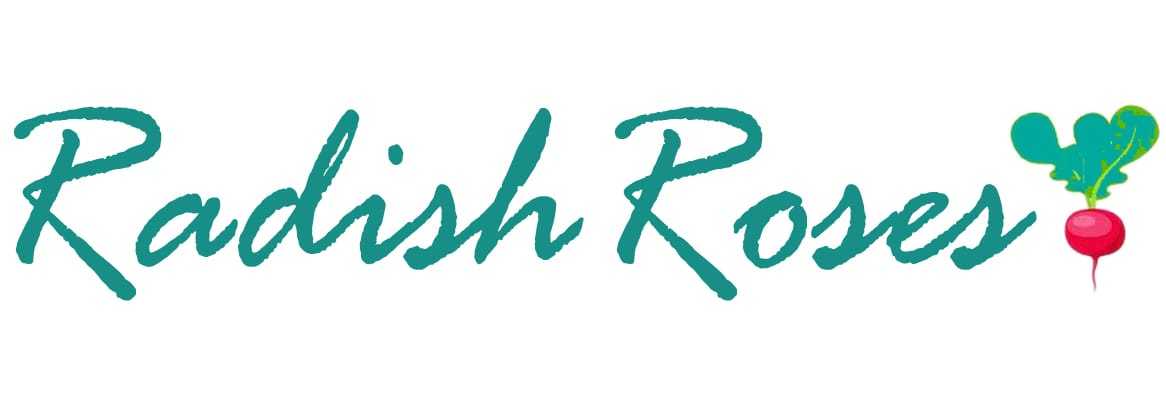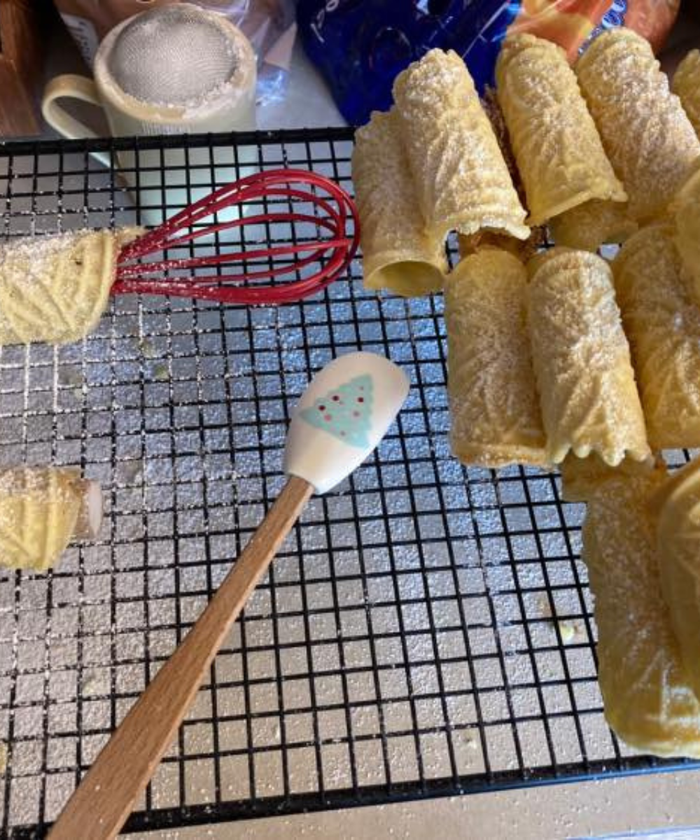Key Takeaways:
- Discover the origins of the traditional Norwegian dessert, Krumkake.
- Understand the cultural significance and evolution of Krumkake recipes, with a basic starter recipe.
- Learn how Krumkake is celebrated and enjoyed in modern culinary practices.
Krumkake, a delightful, wafer-thin Norwegian cookie, has a rich history that spans centuries. I grew up eating krumkake made by my grandma, and those Lutheran church basement women from way back! When I was in about 2nd grade, we moved to a house across town, and the neighbor lady brought us a box of homemade treats that included a few of the delicately rolled cookies.
I try to make a batch every year at Christmas, but it's a bit tedious, and I will admit, it doesn't always make the cut on my to-do list. This article will take you on a journey through the origins, cultural significance, and evolution of Krumkake, providing a comprehensive understanding of this beloved dessert.
Pronunciation
Many people simply pronounce the word phonetically, and more familiarly, like "crumb cake". We may lack the proper accent, but anyone with more than a little Norwegian heritage will say it closer to the authentic pronunciation, sounding more like "kroom kaka":
How to pronounce KRUMKAKE
The Origins of Krumkake
Krumkake, which literally translates to "curved cake" in Norwegian, has its roots in the Scandinavian tradition. The earliest versions of this dessert date back to the 1700s, where it was initially prepared over open fires using decorative irons. These irons were often passed down through generations, with each family imprinting their unique pattern onto the cookies, making them not just a treat but a symbol of heritage.
The tradition of Krumkake baking was deeply intertwined with major holidays, especially Christmas. It was a time for families to gather and engage in the ritual of baking these intricate cookies, each one a small work of art. The recipe was simple, consisting of eggs, sugar, flour, and butter, but the technique required skill and patience, ensuring that each Krumkake was perfectly crisp and beautifully rolled.
Krumkake in Cultural Celebrations
Krumkake isn't just a dessert; it's a cultural emblem that represents the warmth and hospitality of Norwegian homes. It is traditionally served during celebrations and festive occasions, often accompanied by coffee or sweet wine. The cookie's delicate nature and ornate design make it a special treat that signifies the care and attention put into its preparation.
In Norway, Krumkake is particularly associated with Christmas and New Year's celebrations. It's common for Norwegian families to own a Krumkake iron, which is used to bake the cookies to perfection. The iron's intricate patterns are not only for aesthetics; they are a nod to the rich history and tradition of Norwegian baking, with each design telling a story of its own.
The Evolution of Krumkake Recipes
Over the years, the basic recipe for Krumkake has remained relatively unchanged. However, as the dessert spread across the globe, various adaptations emerged. Some recipes began to include cardamom, vanilla, or even citrus zests to add a unique twist to the traditional flavor. The introduction of electric Krumkake irons also revolutionized the way these cookies are made, making the process more accessible and consistent.
Despite these modern adaptations, the essence of Krumkake remains the same. The goal is to achieve a cookie that is light, crisp, and subtly sweet, with a texture that melts in your mouth. Whether one sticks to the traditional recipe or experiments with new flavors, the spirit of Krumkake baking is about preserving the connection to its Norwegian roots while embracing innovation.
Basic Recipe

Krumkake Around the World
As Norwegians migrated to other countries, they brought Krumkake with them, introducing this delightful dessert to new communities. In places like the United States, particularly in areas with a high concentration of Norwegian immigrants, Krumkake has become a cherished part of local culinary traditions. It's not uncommon to find Krumkake at Scandinavian festivals, heritage centers, and even in some specialty bakeries.
The global spread of Krumkake has also led to interesting fusions and interpretations. Some bakers fill the rolled cookies with whipped cream, fruit, or chocolate, while others serve them flat, like a waffle cone. This adaptability has allowed Krumkake to remain relevant and beloved, even as it crosses borders and enters new culinary landscapes.
The Art of Making Krumkake
Making Krumkake is an art form that requires both precision and flair. The batter must be carefully prepared to ensure the right consistency, and the timing when baking each cookie is crucial to avoid burning or undercooking. Once the Krumkake is delicately removed from the iron, it must be quickly rolled around a wooden dowel or cone before it cools and hardens.
This process is often a social activity, with family members taking turns baking and rolling the cookies. It's a chance to bond and share stories, with the older generation passing down tips and techniques to the younger ones. The art of making Krumkake is as much about the experience as it is about the end product, embodying the communal spirit of Norwegian culture.
Krumkake in Modern Culinary Practices
Today, Krumkake continues to be a staple in Norwegian cuisine, but it has also found its place in contemporary culinary practices. Chefs and home bakers alike are experimenting with Krumkake, incorporating it into desserts like ice cream sandwiches or using it as a decorative element in plated dishes. Its versatility and elegant appearance make it a favorite among those looking to add a touch of sophistication to their creations.
Moreover, the rise of food blogging and social media has introduced Krumkake to a broader audience. Online recipes and tutorials have made it easier for people around the world to try their hand at baking these traditional cookies. As a result, Krumkake has gained a following among food enthusiasts who appreciate its history and the skill involved in making it.
Preserving the Tradition of Krumkake
Despite the changes and innovations, there is a strong movement to preserve the traditional methods of Krumkake baking. Cultural organizations and Norwegian embassies often host baking workshops and demonstrations to keep the heritage alive. These events not only teach the technical aspects of making Krumkake but also emphasize the importance of maintaining cultural traditions.
For many Norwegians and those of Norwegian descent, Krumkake is more than just a cookie; it's a tangible connection to their ancestry. By preserving the traditional recipes and baking techniques, they honor their past and ensure that future generations can experience the same joy and pride that comes with making and sharing Krumkake.
I was lucky enough to inherit krumkake irons from my grandmother. They are beautiful, heavy cast iron pieces with wooden handles, meant to be used on a wood stove. I love them, but they are not practical. I actually use an electric pizelle maker because it makes a pretty design that is smaller, easy to roll, easy to pack into a cookie tin, and easier to eat than the larger versions I remember as a kid.
Summary
Krumkake's history is a tapestry woven with threads of tradition, family, and cultural pride. From its humble beginnings in Norway to its global presence today, Krumkake has remained a symbol of hospitality and celebration. Its simple yet elegant nature continues to captivate bakers and dessert lovers alike, ensuring that this cherished cookie will be enjoyed for generations to come.
FAQ Section
Q: What is the traditional way to serve Krumkake?
A: Traditionally, Krumkake is served rolled into a cone shape and can be enjoyed plain or filled with whipped cream, berries, or other sweet fillings.
Q: Can Krumkake be made without a special iron?
A: While a Krumkake iron is essential for creating the traditional pattern and shape, some bakers use a pizzelle maker as an alternative, though the results may vary.
Q: Is Krumkake only eaten during Christmas?
A: While Krumkake is particularly popular during Christmas, it is enjoyed year-round for various celebrations and as a special treat in Norwegian households.
Let's Talk!
Do you make Krumkake?
Do you fill it or eat it just how it is?
What other special treats do you make that have been passed down in your family?

